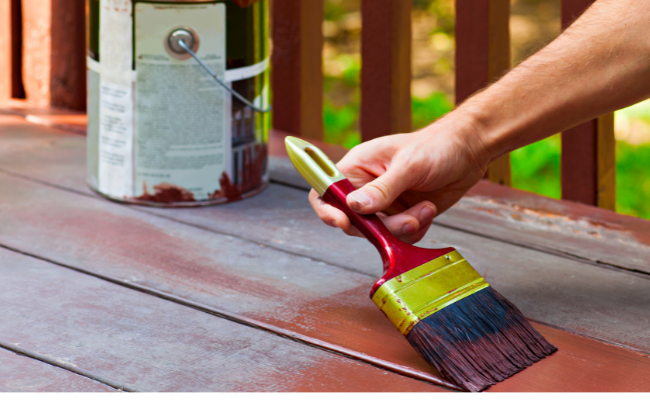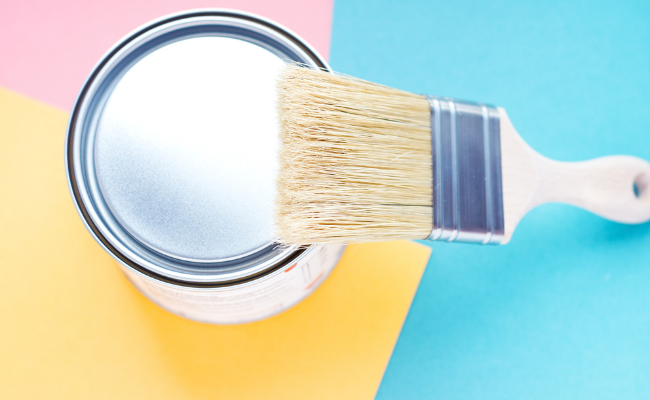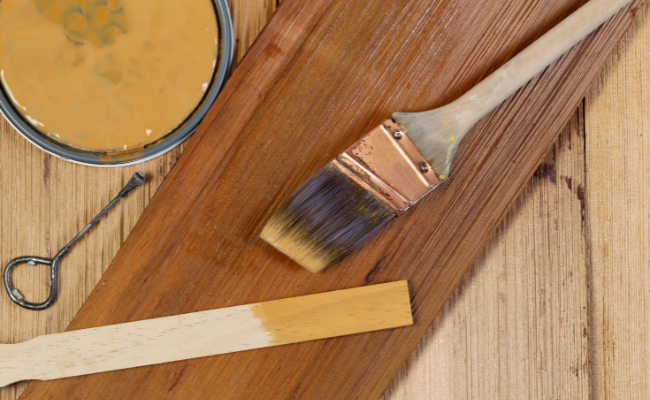Best Applicators for Deck Staining: An Ultimate DIY Guide
Are you looking to give your deck a fresh new look? Deck staining can be a rewarding DIY project that adds beauty and protection to your outdoor space. A well-maintained deck can significantly boost your home’s curb appeal and overall value.
When it comes to DIY home improvement, staining a deck is a popular project. However, a successful staining job requires more than just picking up any stain or getting deck-staining tools from the hardware store.
When looking for the easiest way to stain a deck, selecting the right applicator can mean the difference between a DIY project that looks professional and one that doesn’t. Choosing the right applicator for the job is crucial to achieving professional-looking results. With a plethora of applicators available, making an informed choice can seem daunting.
This comprehensive guide takes you through the essentials of staining applicators, offering expert advice and empowering you to create a stain job that stands out. Now, let’s explore the different types of applicators available for staining your deck.
The Importance of Choosing the Right Applicator
 Just as a seasoned artist doesn’t underestimate the importance of a quality brush, a DIY enthusiast shouldn’t underestimate the power of a good applicator.
Just as a seasoned artist doesn’t underestimate the importance of a quality brush, a DIY enthusiast shouldn’t underestimate the power of a good applicator.
A superior applicator simplifies the staining process and ensures a smooth, even application. It allows you to cover large areas quickly, prevents drips and runs, and effortlessly reaches the difficult nooks and crannies of your deck boards.
On the flip side, the wrong applicator can lead to frustrating results. It can create a mess and waste stain and even adversely affect the final appearance of your project.
The poor application can result in unsightly streaks, blotches, or an uneven color that can detract from the aesthetic of your deck. Besides, it may also reduce the longevity of your stain job, requiring frequent and time-consuming reapplications.
The type of stain you choose also has a bearing on the kind of applicator you should use. For instance, water-based stains work best with synthetic brushes, while oil-based stains are better suited to natural bristle brushes or lambswool applicators. Therefore, understanding the relationship between stains and applicators is critical for a successful staining project.
Top 6 Best Applicators for Staining a Deck
Choosing the perfect applicator for your staining project can dramatically improve your results. Here, we discuss the five top-rated deck stain applicators that promise a smooth surface and professional finish.
1. Synthetic Brushes
Synthetic brushes, particularly nylon or polyester brushes, are fantastic for water-based stains. These deck stain brushes are water-resistant, hold their shape excellently, and offer an even, controlled application.
These types of brushes excel at detail work, enabling you to reach areas like tight corners and crevices that rollers and pads might miss. Synthetic brushes are an ideal choice for meticulous DIYers who don’t mind spending a little extra time to achieve perfection.
2. Natural Bristle Brushes

However, they may lose their shape in the water, making them unsuitable for water-based stains. If you’re planning to use an oil-based stain, a natural bristle brush might be your best friend.
3. Lambswool Applicators
Lambswool applicators are a top-choice flooring brush for a smooth, lint-free finish on rough surfaces when applying oil-based stains, particularly on large, flat surfaces like a deck floor. They have excellent stain-holding capacity, minimizing your trips back to the can and making your staining process more efficient. If speed and efficiency are your priorities, you can’t go wrong with a lambswool applicator.
4. Foam Brushes
Foam brushes are affordable and disposable, making them a popular choice for smaller staining jobs or those on a tight budget. They’re incredibly versatile, working well with both oil-based and water-based stains.
Overall, they deliver a smooth, even finish without leaving annoying brush marks. Foam brushes are an excellent choice if you’re looking for an affordable yet effective applicator.
5. Stain Pads
Stain pads offer an excellent balance between speed and control. They hold more stain than brushes and apply it more evenly than rollers, making them a superb choice for large, flat surfaces. Like foam brushes, deck stain pads are also versatile and work well with both oil-based and water-based stains.
6. Sprayers
Sprayer applicators offer a fast and efficient way to apply stains on deck surfaces. They can cover large areas quickly, saving you time and effort. Stain sprayers are especially beneficial for projects with intricate designs or hard-to-reach areas, as they can provide thorough coverage in tight spaces.
DIY Staining Tips and Tricks

1. Proper Preparation Is Key
The importance of thoroughly cleaning and preparing your deck before applying the stain cannot be overstated. Use a power washer, deck cleaner, or brightener to remove old stains, dirt, mildew, or grayed wood. Proper preparation ensures that the stain adheres better and lasts longer.
2. Always Test Your Stain
It’s wise to test your wood stain on a small, inconspicuous area before applying it to the entire deck. This will give you a clear idea of the color and finish, ensuring it meets your expectations.
3. Take Your Time
Staining is not a race. Taking your time ensures an even application and minimizes the chances of drips and blotches. Patience is indeed a virtue when staining a deck to achieve high-quality results.
4. Keep a Wet Edge
Maintaining a wet edge when staining is crucial. This means you should never let the stain dry before extending the stained area, helping avoid lap marks and ensure a uniform finish.
5. Mind the Weather
Staining is a fair-weather activity. Avoid staining in direct sunlight or on hot surfaces, as the stain may dry too quickly. The heat drying the stain too quickly prevents it from penetrating the wood adequately. Also, refrain from staining if rain is expected within 24 hours.
6. Don’t Hesitate to Seek Professional Help
If you’re unsure or find yourself needing professional advice, don’t hesitate to reach out to expert home repair and painting services of these recommended companies:
- Mr. Home Repair is a trusted name in the home improvement industry, offering a wide range of products and services to help you achieve your DIY goals.
- Tuck Home Services specializes in deck building and maintenance, providing expert guidance on deck staining.
- Bolt Painting is known for its top-notch painting services, including deck staining. With the support of these reputable companies, you can confidently embark on your deck staining project.
Conclusion
Choosing the right applicator for staining a deck is just as important as mastering the staining technique itself. With this detailed guide, you now have the knowledge to select the best applicator for your specific staining needs and preferences.
Remember that patience and proper preparation are key to achieving a professional, long-lasting finish. So go ahead, roll up your sleeves, pick up that applicator, and transform your deck into a thing of beauty. Happy staining!
Note: This article is for informational purposes only. Always refer to the specific instructions and recommendations provided by the stain manufacturer and applicator brands for the best results.
Frequently Asked Questions (FAQs)
Does the size of the deck matter?
If you have a large deck, roller or sprayer applicators may be more efficient in covering a significant area quickly. For smaller or detailed areas, brush or stain pad applicators provide better control.
Do different applicators create different finishes or appearances?
Different applicators can create different finishes. Brushes offer versatility and control for achieving desired textures, while rollers provide a smoother and more uniform finish. Stain pads and sprayers generally result in a more consistent appearance.

